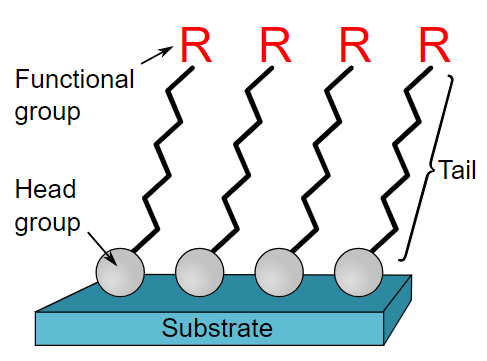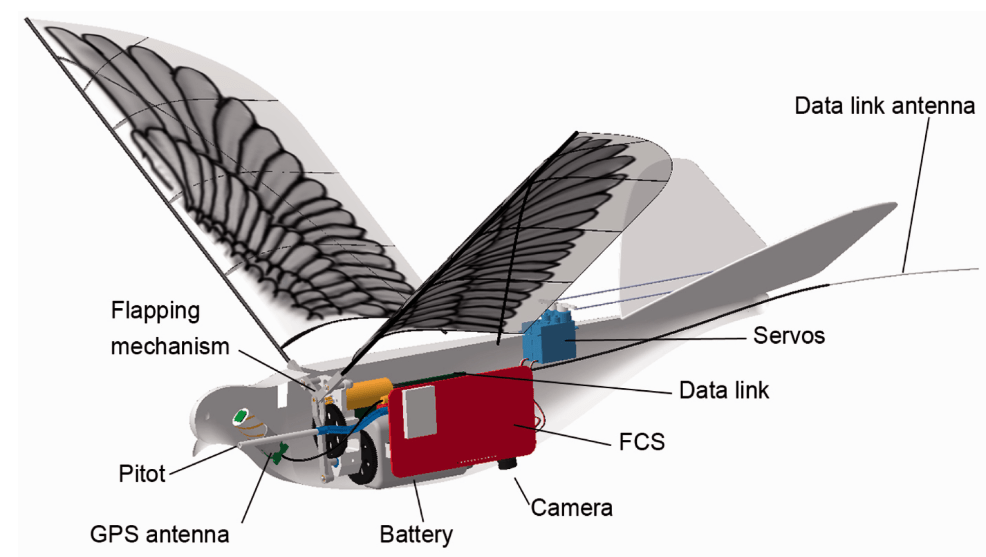Advanced Nano Drones Created from Nanomaterials
Nanotechnology's ascent into the realm of aerial technology has birthed an era where drones, transformed by the integration of advanced nanomaterials, emerge as trailblazers of innovation.
These nano-technology drones, inspired by the intricate brilliance of nature’s design, epitomize a convergence of cutting-edge science, engineering finesse, and biomimicry. Harnessing the transformative prowess of nanomaterials, these drones encapsulate not merely the future of aerial technology but also the potential to revolutionize diverse industries and societal landscapes. To develop the technologies of the future, discover high-quality Nanografi nanomaterials.
Introduction
At the heart of nano-technology drones lies the seamless amalgamation of nanomaterials, defined by their remarkable properties at the nanoscale. Carbon nanotubes, graphene, nanocomposites, and intricately engineered nanostructures form the bedrock of these drones, embodying characteristics essential for their unparalleled efficiency, agility, and functionality. These nano-technology drones, ingeniously designed to emulate the flight dynamics of creatures such as mosquitoes and insects, represent a tour de force in biomimicry. The precision engineering, facilitated by nanomaterials, endows these drones with flight stability, unparalleled maneuverability, and biomimetic behaviors, mirroring the dexterity and adaptability observed in nature's aerial wonders. Beyond their inherent flight capabilities, nano-technology drones have permeated diverse sectors. Their applications span a vast spectrum, from precision surveillance and environmental impact assessment to transformative medical interventions. Nano-technology drones, with their compact size, advanced sensors, and nanomaterial-integrated components, redefine data collection, reconnaissance, and surveillance in agriculture, security, and environmental studies. Moreover, their potential for targeted drug delivery and remote diagnostics in the medical domain heralds a new era of precision and efficiency.
However, amidst these groundbreaking advancements lie challenges. The scalability of nanomaterial-based drone production, manufacturing costs, ethical considerations, and regulatory frameworks pose hurdles demanding meticulous attention. Addressing these challenges remains pivotal for widespread adoption, responsible deployment, and ethical utilization of these remarkable technological marvels. As we navigate the precipice of technological evolution, the future holds boundless promise for nano-technology drones crafted from advanced nanomaterials. Ongoing research and development endeavors strive to augment their capabilities, potentially transforming industries, scientific research, and societal solutions. Yet, their integration into society necessitates a judicious and ethical approach, demanding the reconciliation of technological advancements with societal and ethical considerations.
Nanomaterial Components: Key Building Blocks
Nanomaterials, characterized by their extraordinary properties at the nanoscale, form the foundational basis for constructing nano-technology drones. Materials such as carbon nanotubes, graphene, nanocomposites, and meticulously engineered nanostructures are instrumental in creating lightweight, durable, and high-performance components crucial for the drones' operational efficiency.The foundational essence of nano-technology drones lies in the intricate selection and integration of various nanomaterials, each contributing specific properties crucial to the drones' construction and functionality.
Carbon Nanotubes
Carbon nanotubes (CNTs), cylindrical structures comprising carbon atoms arranged in a hexagonal pattern, exemplify unparalleled strength-to-weight ratios. Their exceptional mechanical properties make them ideal for reinforcing drone components. Whether incorporated into the drone's frame or used to fortify wings and structural elements, CNTs enhance durability while maintaining lightweight characteristics.Moreover, CNTs exhibit excellent electrical conductivity, allowing for their integration into circuitry and power distribution systems within nano-technology drones. This property enables efficient energy transmission and management, crucial for powering various drone functionalities.
Graphene
Graphene, a single layer of carbon atoms arranged in a two-dimensional honeycomb lattice, boasts remarkable properties like high strength, flexibility, and conductivity. Its ultra-lightweight nature and exceptional strength make it an ideal candidate for drone construction, particularly in wing design. Integrating graphene into wings enhances durability while maintaining aerodynamic efficiency, enabling precise flight maneuvers. Additionally, graphene's electrical conductivity and sensitivity enable its use in sensor technologies. Incorporating graphene-based sensors within the drone's structure facilitates precise environmental data collection, enabling applications such as environmental monitoring and real-time data analysis.
Are you curious about the use of graphene in the aerospace industry? Then read the blog.
Nanocomposites
Nanocomposites, comprised of a matrix material reinforced with nanomaterials like nanotubes or nanofibers, offer tailored material properties crucial for various drone components. By embedding nanomaterials within the composite matrix, the resulting material gains improved mechanical strength, enhanced thermal stability, and reduced weight. These nanocomposites find applications in diverse drone components, including the frame, propulsion systems, and structural elements. By harnessing nanocomposites, drones can achieve a balance between strength, weight, and durability, essential for optimal performance and longevity.
Engineered Nanostructures
Engineered nanostructures, meticulously designed and fabricated at the nanoscale, offer tailored functionalities for specific drone components. These nanostructures encompass a wide array of designs, including nanoparticles, nanowires, and nanopores, each designed to serve distinct purposes. For instance, nanostructures integrated into sensor systems enable heightened sensitivity and specificity in data acquisition. Nanoparticles infused in coatings or surfaces can provide functionalities such as anti-corrosion properties, enhancing the drone's durability in challenging environments.
Integration of Nanomaterials
The seamless integration of nanomaterials within the intricate components of drones highlights a fusion of advanced manufacturing techniques and nanoscience. Precision engineering methods facilitate the utilization of nanomaterials in constructing components like frames, wings, sensors, and propulsion systems, optimizing their efficiency and performance metrics.
Advanced Manufacturing Techniques
Manufacturing nano-technology drones involves cutting-edge processes designed for nanoscale precision. Techniques like atomic layer deposition (ALD), electron beam lithography (EBL), and molecular self-assembly enable the manipulation and arrangement of nanomaterials with unparalleled accuracy. ALD, for instance, allows atomic layer-by-layer deposition of materials, ensuring precise thickness control at the nanoscale. This technique finds application in coating drone components with nanomaterials for enhanced functionality or protective layers. EBL employs focused electron beams to create nanoscale patterns on surfaces. It facilitates the fabrication of intricate nanostructures critical for sensor arrays, circuitry, or propulsion systems within nano-technology drones.
Molecular Self-Assembly
Molecular self-assembly, a phenomenon where molecules spontaneously arrange themselves into ordered structures, is harnessed for precise nanomaterial integration. This method enables the creation of nanocomposites or specific nanostructures by exploiting molecular interactions, resulting in tailored properties and functionalities. For instance, self-assembled monolayers (SAMs) aid in the controlled arrangement of molecules on surfaces, allowing precise functionalization of drone components. SAMs can modify surface properties, enhancing adhesion, lubrication, or sensor responsiveness.

Figure 1. An illustration of molecular self-assembly.
Nanomaterial Dispersion and Homogeneity
Achieving uniform dispersion and homogeneity of nanomaterials within drone components is paramount. Techniques such as sonication, high-shear mixing, or electrospinning are employed to ensure consistent distribution of nanomaterials within composite matrices or coatings. Sonication utilizes high-frequency sound waves to disperse nanomaterials within liquid solutions or suspensions, ensuring even distribution. This method is crucial for preparing nanomaterial-infused solutions used in coating applications for drones. Electrospinning, on the other hand, creates nanofiber meshes by drawing nanomaterial-containing polymers through electric fields. These nanofiber meshes, used in drone components, offer enhanced mechanical strength and structural integrity due to the integrated nanomaterials.
Additive Manufacturing (3D Printing)
Additive manufacturing techniques like 3D printing offer customizable fabrication of drone components at the nanoscale. Utilizing specialized printers and nanomaterial-infused filaments or resins, intricate and tailored drone parts can be produced with precision and minimal waste. By employing additive manufacturing, intricate designs with integrated nanomaterials can be realized, optimizing structural strength, reducing weight, and enhancing functionalities in nano-technology drones.
Biomimicry in Nano-Technology Drones
Biomimicry in nano-technology drones involves using nature as inspiration for designing and engineering these tiny aerial devices. By studying the structures and systems of living organisms, such as the flight patterns of birds or the sensory systems of animals, engineers can create more efficient, agile, and sophisticated nano-drones. This approach leads to innovations in aerodynamics, navigation, and detection technologies, enhancing the performance and capabilities of these drones.
Mosquito Robots: Emulating Nature's Flight Dynamics
Engineers have meticulously designed mosquito-like nano-technology drones, meticulously replicating the flight dynamics observed in their biological counterparts. These drones, incorporating nanomaterial-based components, exhibit flight stability, agile maneuverability, and biomimetic behaviors. The wing structures, inspired by the flexibility and resilience of insect wings, underscore remarkable advancements in design innovation.
Flipping Wing Robots: Agile Aerial Maneuvers
Flipping wing robots, drawing inspiration from nimble insects like fruit flies, exemplify innovative flight mechanisms. Their nanomaterial-based lightweight yet robust wings empower these drones to execute rapid aerial flips and navigate confined spaces with unparalleled agility. These attributes render them suitable for precision-demanding applications in challenging environments.

Figure 2. A biomimetic flapping-wing micro air vehicle.
Diverse Applications of Nano-Technology Drones
Surveillance and Monitoring
Nano-technology drones find extensive applications in surveillance and monitoring across diverse industries. Their compact size and exceptional maneuverability, coupled with advanced sensors and nanomaterial-based components, enable precise data collection, reconnaissance, and surveillance in fields ranging from agriculture to security, optimizing operational efficiency.
Environmental Impact Assessment
In environmental research and assessment, nano-technology drones play a pivotal role. Their unparalleled maneuverability grants access to remote or hazardous areas, while the integration of nanomaterial-based sensors facilitates precise data collection on pollution levels, biodiversity assessments, and habitat analyses. This data empowers informed decision-making for environmental conservation efforts.
Medical Interventions and Delivery
The medical field harnesses the potential of nano-technology drones for targeted drug delivery and remote diagnostics. Equipped with nanomaterial-based sensors and delivery systems, these drones offer unparalleled precision and efficiency in medical interventions, potentially revolutionizing treatments and emergency responses in remote or inaccessible regions.
Conclusion
The future of nano-technology drones, harnessed from advanced nanomaterials, appears profoundly promising. Ongoing research and development endeavors are poised to significantly augment their capabilities, potentially transforming industries, scientific research, and societal solutions.
In conclusion, nano-technology drones represent the epitome of scientific innovation, engineering excellence, and nature-inspired design convergence. As nanotechnology continues its evolutionary trajectory, these drones equipped with nanomaterials stand as vanguards of technological progress, offering transformative potential across multifarious fields. Their integration into society necessitates a cautious and ethical approach, addressing challenges and ensuring responsible utilization for the collective advancement of humanity.
To follow research and latest technological developments, visit Blografi.
References
ALD (Atomic Layer Deposition) | ASM. (n.d.). Retrieved January 2, 2024, from https://www.asm.com/our-technology-products/ald
Electron-beam lithography - Wikipedia. (n.d.). Retrieved January 2, 2024, from https://en.wikipedia.org/wiki/Electron-beam_lithography
Graphene’s Use in the Aerospace Industry - Nanografi Nano Technology. (n.d.). Retrieved January 2, 2024, from https://nanografi.com/blog/graphenes-use-in-the-aerospace-industry/
Insect-Size Flying Robots Could Help On Rescue Missions, MIT Scientist Says : NPR. (n.d.). Retrieved January 2, 2024, from https://www.npr.org/2021/03/04/973610866/dont-swat-this-bug-it-might-be-a-robot-on-a-rescue-mission
Love, J. C., Estroff, L. A., Kriebel, J. K., Nuzzo, R. G., & Whitesides, G. M. (2005). Self-Assembled Monolayers of Thiolates on Metals as a Form of Nanotechnology. Chem. Rev., 105(4), 1103–1170. https://doi.org/10.1021/cr0300789
Microdrones with light-driven nanomotors | ScienceDaily. (n.d.). Retrieved January 2, 2024, from https://www.sciencedaily.com/releases/2022/04/220421130941.htm
Small is beautiful: Nano drone tech is advancing. (n.d.). Retrieved January 2, 2024, from https://www.defenceiq.com/defence-technology/articles/nano-drone-tech-is-advancing
Wu, X., Ehehalt, R., Razinskas, G., Feichtner, T., Qin, J., & Hecht, B. (2022). Light-driven microdrones. Nature Nanotechnology 2022 17:5, 17(5), 477–484. https://doi.org/10.1038/s41565-022-01099-z
Yang, W., Wang, L., & Song, B. (2018). Dove: A biomimetic flapping-wing micro air vehicle. International Journal of Micro Air Vehicles, 10(1), 70–84. https://doi.org/10.1177/1756829317734837/ASSET/IMAGES/LARGE/10.1177_1756829317734837-FIG20.JPEG
Recent Posts
-
Advanced Materials for Unmanned Aerial Vehicle (UAV) Protection Against Laser
Consider a UAV on a critical mission, rendered inoperative by a sudden laser attack. With the increa …26th Jul 2024 -
Simulation and Modeling of Material Properties
Our world is composed of a dazzling array of materials, each with its own unique properties that dic …19th Jul 2024 -
Advanced Coatings for Superior Corrosion and Wear Resistance
Corrosion and wear pose significant challenges across various industries, leading to substantial eco …12th Jul 2024





